(Quratulain Khalid)
On 21 June 2025, the United States, at Israel’s urging, unleashed a barrage of B-2 Spirit stealth bombers and Tomahawk missiles on Iran’s nuclear facilities at Fordow, Natanz, and Isfahan, igniting a firestorm of regional fury. Iran, bloodied but unbowed, denounced the “criminal aggression,” while its ally, Yemen’s Houthi movement, issued a chilling warning: any US involvement in attacks on Iran would draw American warships in the Red Sea into their crosshairs. With the Middle East teetering on the brink, the Houthis—Ansar Allah—stand as a formidable force, their strategic perch on the Red Sea’s shores amplifying their defiance. Who are these fierce warriors, backed by Iran’s revolutionary zeal, daring to challenge the world’s mightiest navy? Will their threats materialize into strikes on US ships, plunging the region into chaos?
I. The Houthis: Born in Resistance, Forged in War
The Houthis, formally Ansar Allah (Partisans of God), are a Zaydi Shia Islamist movement rooted in Yemen’s rugged Saada governorate, emerging in the 1990s under the leadership of Hussein al-Houthi. Named after their martyred founder, killed by Yemeni forces in 2004, the Houthis champion Yemen’s Zaydi minority—roughly 35% of the population—against perceived marginalization by the Sunni-majority government and Saudi influence. Their slogan, “Death to America, Death to Israel, Curse upon the Jews, Victory to Islam,” pulses with revolutionary fervor, aligning them with Iran’s “Axis of Resistance” alongside Hezbollah and Hamas.

From 2004 to 2010, the Houthis waged six wars against Yemen’s government, honing their guerrilla tactics in Yemen’s mountainous terrain. By 2014, they seized Sanaa, the capital, ousting the Saudi-backed President Abd-Rabbu Mansour Hadi and establishing de facto control over northern Yemen, including the Red Sea coast. The Saudi-led coalition, supported by the US and UK, launched a brutal campaign in 2015 to dislodge them, killing over 377,000 Yemenis by 2022, per UN estimates, yet the Houthis endured, their resolve hardened by civilian suffering and Western complicity.
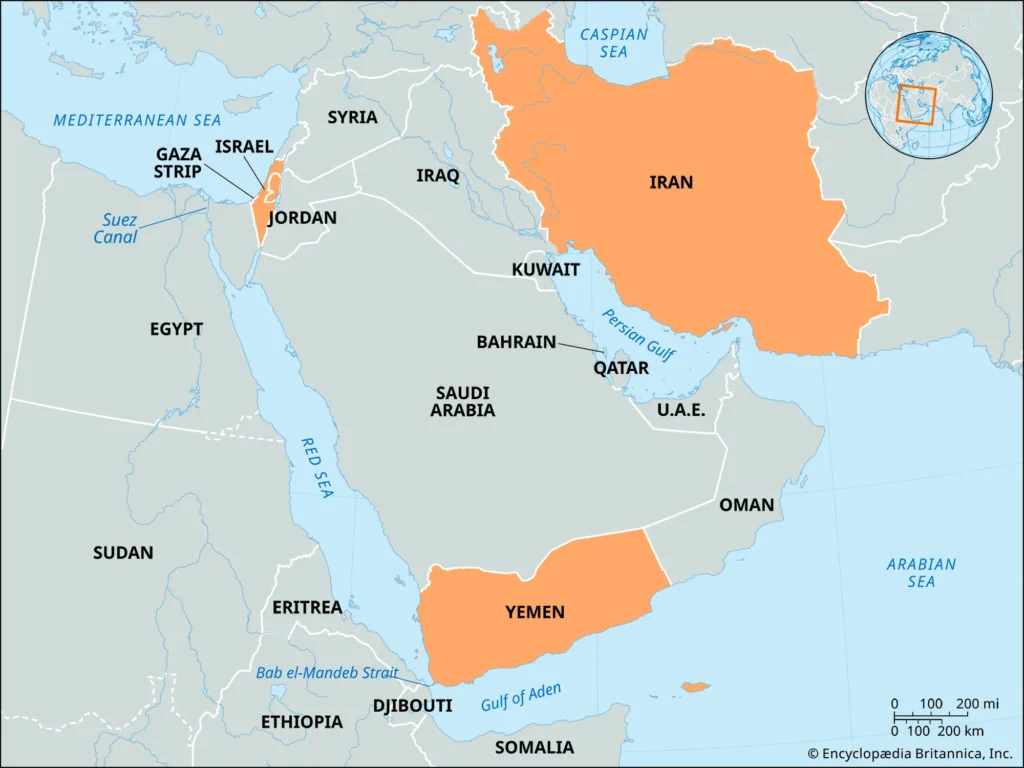
The Houthis are not mere rebels but a battle-scarred movement, their ideology blending Zaydi revivalism with anti-imperialist rage. Their control of Yemen’s north, home to 70% of the population, and their survival against a decade of Saudi bombardment testify to their tenacity. As X posts from @YemenNewsAgency proclaim, “The Houthis fight for Yemen’s sovereignty, not as Iran’s pawns,” reflecting a narrative of independence that resonates domestically, even as their Iranian ties deepen.
II. Iran’s Lifeline: Military Support and Missile Might
Iran, the Houthis’ ideological and military anchor, has transformed Ansar Allah from a ragtag militia into a regional powerhouse. Since 2009, Tehran’s Islamic Revolutionary Guard Corps (IRGC)-Qods Force has provided training, weapons, and intelligence, smuggled via maritime routes through Oman and Somalia, despite a UN arms embargo. Saudi and US claims, corroborated by the Italian Institute of International Political Studies, confirm Iran’s role in equipping the Houthis with advanced weaponry, including drones and missiles, though Tehran denies direct control, framing its support as political solidarity.
- Missile Arsenal: The Houthis wield an array of Iranian-supplied or locally assembled missiles, per CSIS reports. These include:
- Quds-2 Cruise Missiles: With a 1,350 km range, capable of striking Israel or Saudi targets.
- Anti-Ship Ballistic Missiles (ASBMs): Modified Iranian designs, like the Fateh-110, with ranges up to 300 km, threatening Red Sea shipping.
- Toofan Anti-Ship Missiles: Precision-guided, designed to sink frigates or destroyers.
- Drones: The Houthis deploy Samad-3 and Samad-4 UAVs (1,800 km range) and Wa’id drones, akin to Iran’s Shahed-136, with 2,500 km reach. Naval drones, 7-meter explosive-laden USVs, add a kamikaze threat.
- Local Production: Iran has helped the Houthis build drone factories in Yemen, per Cambridge University’s Dr. Elisabeth Kendall, enabling self-sufficiency. Intercepted shipments, like UK forces seizing Iranian 9M133 Kornet anti-tank missiles in 2022, reveal Tehran’s supply chain.
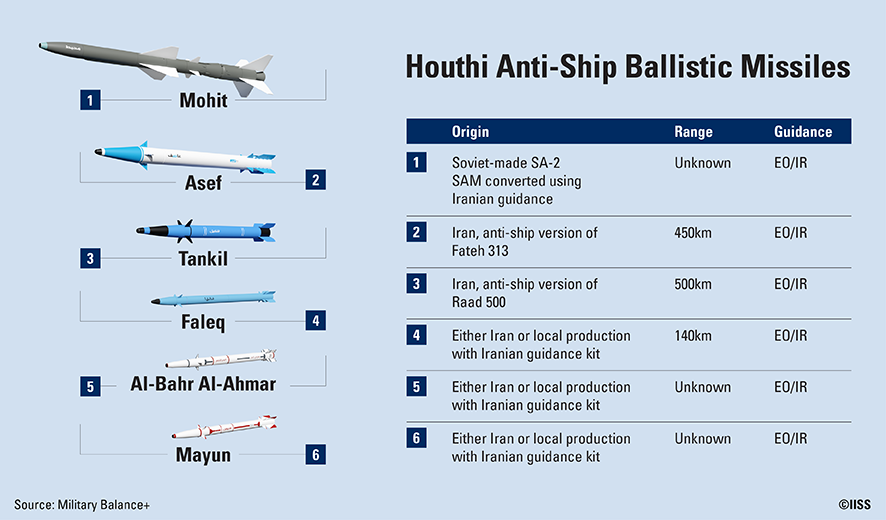
The Houthis’ arsenal, smuggled piece by piece, has grown sophisticated, with IISS noting their ASBMs “getting better all the time.” Russia’s alleged intelligence support and potential anti-ship missile transfers, reported by The Wall Street Journal in 2024, further bolster their capabilities, though US and Saudi pressure stalled these efforts. The Houthis’ military spokesman, Yahya Saree, boasts of “new weapons,” including hypersonic “Palestine 2” missiles, which evaded Israeli defenses in a May 2025 strike near Ben Gurion Airport, signaling their growing lethality.
Iran’s support is strategic, not puppetry. As Michael Knights of the Washington Institute notes, the Houthis are “cooperative partners,” sharing Tehran’s anti-Western and anti-Zionist goals but retaining operational autonomy. This synergy empowers the Houthis to challenge global powers, their missiles a fiery extension of Iran’s revolutionary defiance.

III. Strategic Fortress: The Red Sea’s Chokehold
Yemen’s geography is the Houthis’ greatest weapon, amplifying their modest arsenal into a global threat. Controlling the Red Sea coast, including the Bab al-Mandeb Strait—a 20-mile-wide chokepoint linking the Red Sea to the Gulf of Aden—they hold a dagger to the heart of international trade. The strait, gateway to the Suez Canal, carries 10% of global trade and 20% of oil shipments, per the US Energy Information Administration. Houthi attacks since October 2023, targeting over 190 ships, have slashed Suez traffic by 75% in 2024, forcing reroutes around Africa and costing $15 million daily, per Reuters.
- Terrain Advantage: Yemen’s rugged coastline and mountains shield Houthi missile sites and underground arsenals, frustrating US and Saudi airstrikes. The Economist notes the US failed to establish air superiority in 2024, burning through ammunition reserves.
- Maritime Disruption: The Houthis’ coastal radar and mobile launchers, hidden in civilian areas, enable rapid strikes. Their November 2023 hijacking of the Galaxy Leader and sinking of two vessels demonstrate their reach, with Al Jazeera reporting eight-hour assaults on US warships like the USS Stockdale in 2024.
- Economic Leverage: By demanding “protection payments” from shipowners, per The Economist, the Houthis have turned disruption into a revenue stream, funding their campaign.
The Bab al-Mandeb’s strategic chokehold makes the Houthis a global player, their threats reverberating from Sanaa to Wall Street. As X user @HouthiMedia declared, “We control the Red Sea, and no navy can silence us,” their defiance rooted in geography’s unyielding logic.
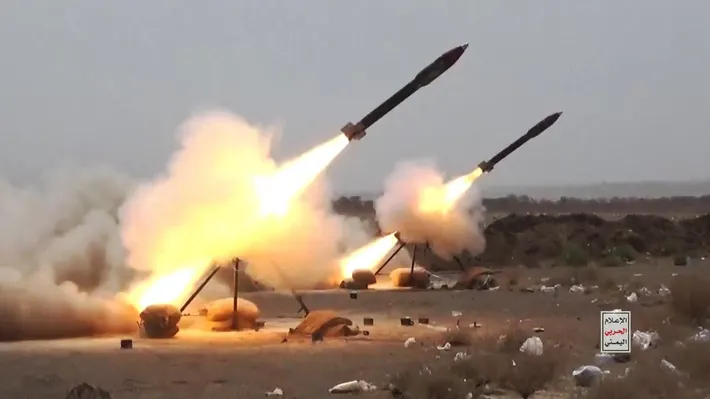
IV. The Flashpoint: US Strikes on Iran and Houthi Threats
The US attack on Iran’s nuclear sites, announced by Trump on 21 June 2025, shattered a fragile regional balance. The strikes, involving B-2 bombers dropping GBU-57 MOPs and 30 Tomahawk missiles, targeted IAEA-monitored facilities, killing 24 Iranian scientists, per Iran’s Tasnim News. Iran’s AEOI reported minimal damage, with Fordow’s bunkers intact, but the assault—condemned by Russia and China as “illegal”—galvanized the Axis of Resistance.
The Houthis, enraged by the “blatant declaration of war” against their Iranian allies, reiterated their threat to target US warships. On 20 June, Yahya Saree warned, “Any American aggression alongside Israel will see our forces strike US ships in the Red Sea,” a pledge echoed in Sanaa rallies chanting “Death to America!” Despite a May 2025 US–Houthi ceasefire brokered by Oman, which halted Red Sea attacks in exchange for paused US strikes, the Houthis now signal readiness to resume hostilities.
- Houthi Capabilities vs. US Navy: The Houthis’ ASBMs, cruise missiles, and drones pose a credible threat to US destroyers and carriers, like the USS Harry S. Truman, patrolling the Red Sea. In November 2024, they launched 16 projectiles at the USS Stockdale and USS Spruance, repelled without damage, but their persistence alarms the Pentagon, per Axios. The USS Abraham Lincoln faced unconfirmed Houthi claims of hits in 2024, highlighting their audacity.
- US Defenses: The US Navy’s Aegis system, aboard Arleigh Burke-class destroyers, intercepts most Houthi projectiles, but the group’s swarm tactics—mixing drones, missiles, and USVs—strain resources. The New York Times notes the US depleted air defense stocks in 2024, costing billions.
- Houthi Motives: Beyond solidarity with Iran, the Houthis seek domestic legitimacy and regional clout. The USMCU’s cultural topography analysis suggests their Red Sea campaign consolidates support in Yemen, framing them as defenders against Western imperialism.
The Houthis’ threat is no bluff. Their March 2025 attacks on the USS Harry S. Truman, though repelled, and their May 2025 hypersonic missile strike near Ben Gurion Airport prove their reach and resolve. As X user @AraquelBloss warned, “This isn’t over, @realDonaldTrump,” capturing the Houthis’ defiance.
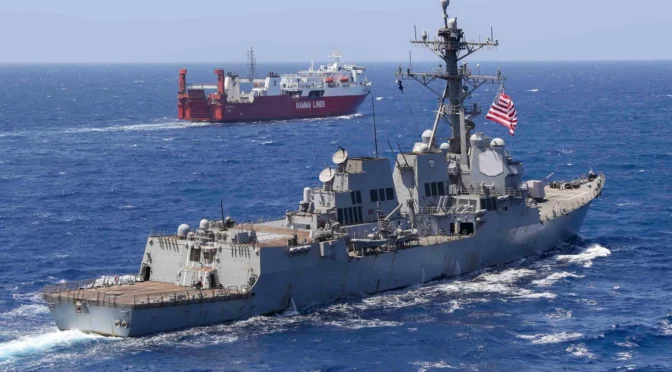
V. Will the Houthis Strike US Ships?
The Houthis’ decision to attack US warships hinges on strategic calculus, not mere rhetoric. Their history—190 ship attacks since 2023, per the Wilson Center—shows they act when provoked, as after US strikes in March 2025 killed 53 Houthis. The US assault on Iran, a direct affront to their ally, crosses a red line, making retaliation likely.
- Likelihood of Attack: High. The Houthis view the US strikes as part of an Israeli–American plot to dominate the region, per Saree’s 20 June statement. Their solidarity with Iran, cemented by years of support, demands action. A targeted strike on a US destroyer or carrier, using ASBMs or drone swarms, could aim to deter further US aggression while avoiding all-out war.
- Constraints: The Houthis face risks. US retaliation, as in March 2025’s 260 strikes, could devastate their infrastructure, per IISS. Saudi pressure, wary of regional escalation, and Yemen’s humanitarian crisis—80% of Yemenis need aid, per the UN—may temper their response. Iran’s counsel for restraint, as after April 2024’s Israel strikes, could also delay action.
- Strategic Goals: A symbolic strike would boost Houthi prestige, rallying Yemenis and the Axis of Resistance. Closing the Bab al-Mandeb, as threatened in 2023, could spike oil prices to $200 per barrel, per Reuters, punishing the US economically.
The Houthis’ restraint since May 2025’s ceasefire suggests tactical patience, but Iran’s violation pushes them toward action. As social media user noted, “Houthi drones are already shadowing US ships,” signaling imminent escalation. A limited strike—perhaps targeting a destroyer with Toofan missiles—is probable within weeks, unless diplomacy intervenes.
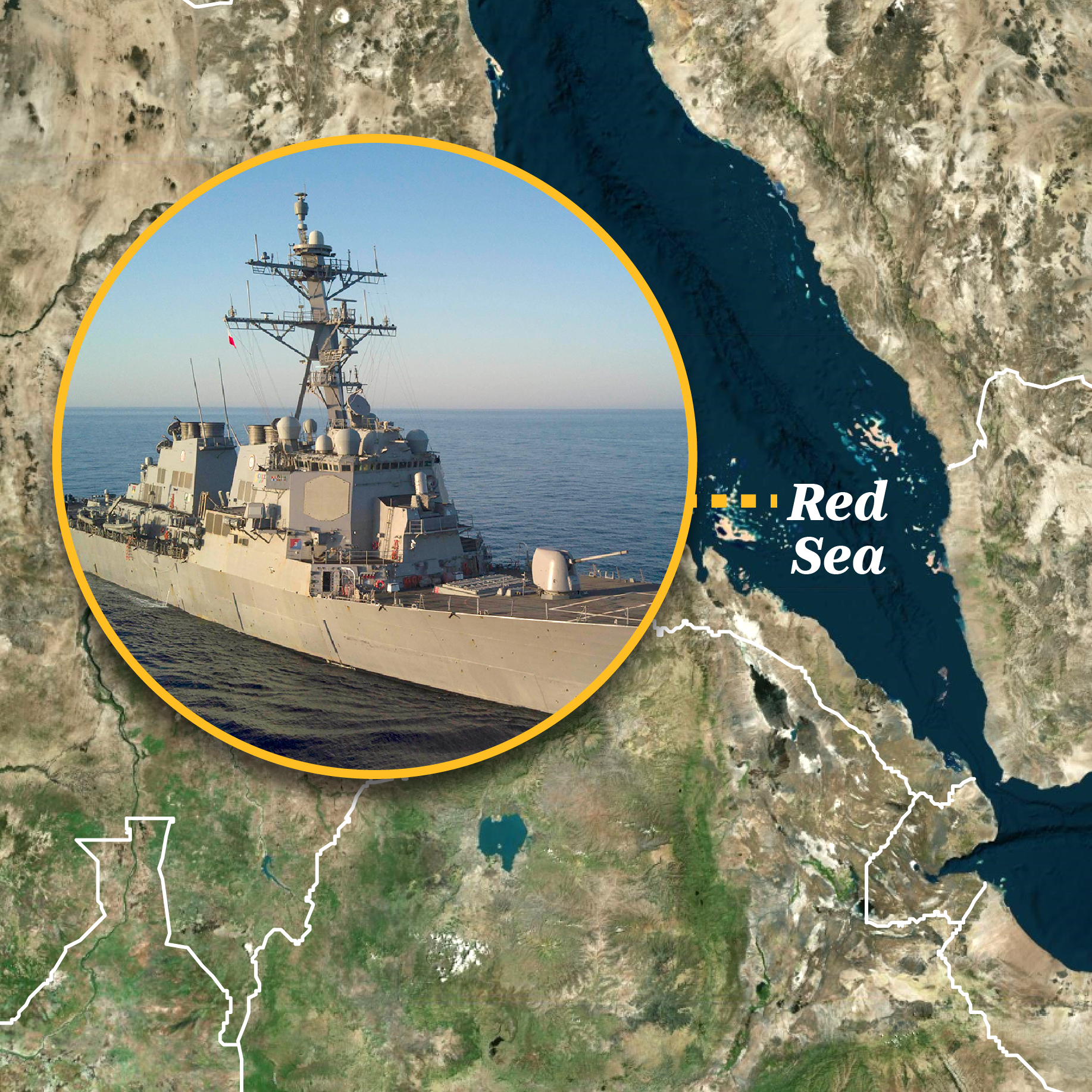
VI. The Broader Stakes: A Region Aflame
A Houthi attack on US ships risks a spiral of retaliation, drawing in Iran, Hezbollah, and Russia, who condemned the US strikes, per TASS. Qatar, hosting the US’s Al Udeid base, fears “serious repercussions,” while China warns of “catastrophic fallout.” The Strait of Hormuz, 20% of global oil’s lifeline, could close if Iran joins the fray, per the International Crisis Group, crashing markets.
The Houthis, undeterred by 260 US strikes in 2024, thrive on defiance. Their underground arsenals, per The Hill, and Yemen’s geography shield them from annihilation. Like Iran, they view resistance as survival, their missiles a cry against Western hegemony. The US, depleted by Ukraine and Houthi campaigns, faces a quagmire, its $2 billion monthly Red Sea costs unsustainable, per The Economist.
VII. Conclusion: The Houthis’ Unyielding Spirit
The Houthis, born in Yemen’s crucible, are no mere proxies but a force of raw defiance, their Red Sea stronghold a fortress against imperial might. Iran’s missiles and training have armed their resolve, turning shepherds into sailors who dare challenge the US Navy. The US’s reckless strike on Iran’s nuclear sites, a slap to the Axis of Resistance, has lit a fuse, with the Houthis poised to strike American warships, their Toofan missiles and hypersonic drones ready to pierce the Red Sea’s calm.
Will they attack? The fire in their hearts, fueled by Iran’s wounds and Yemen’s scars, says yes. A calculated strike looms, a warning to the US that no bomb can break their spirit. Yet, the cost—US retaliation, regional war—demands pause. Diplomacy, not destruction, is the path to peace, but Trump’s arrogance has slammed that door. The Houthis, like Iran, stand unbowed, their cry echoing across the waves: “We will not kneel.” The world holds its breath, for in Yemen’s defiance lies the spark of a wider inferno. Let reason prevail, lest the Red Sea burns.







